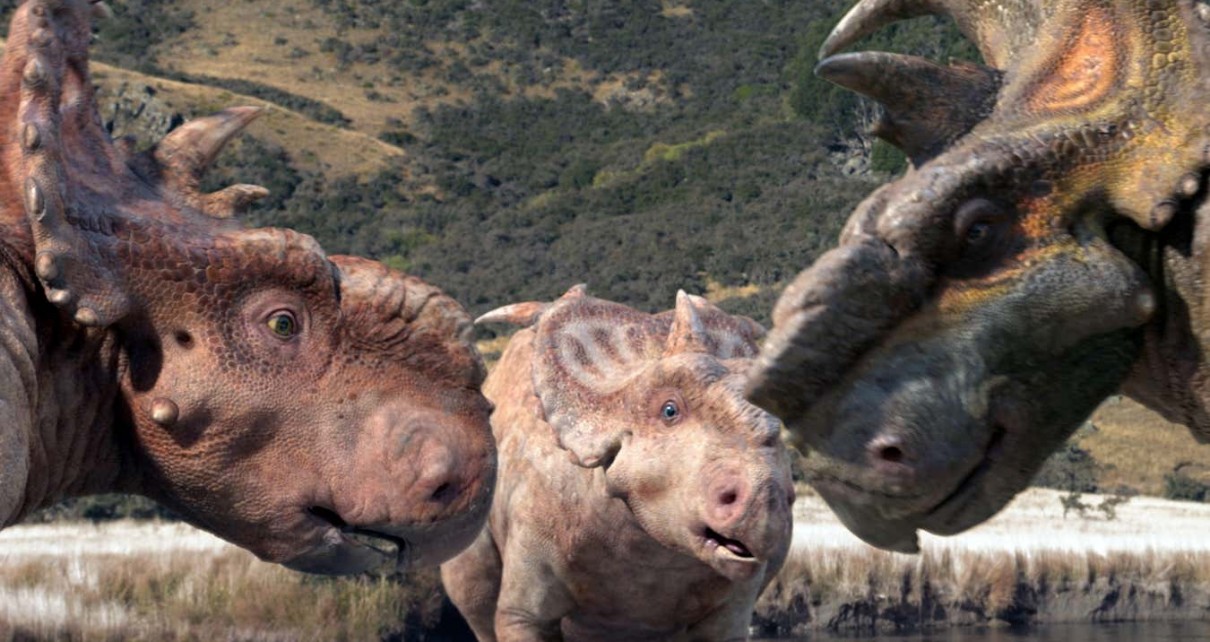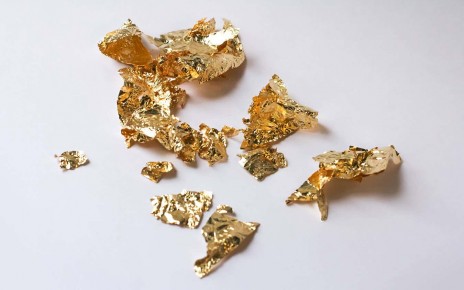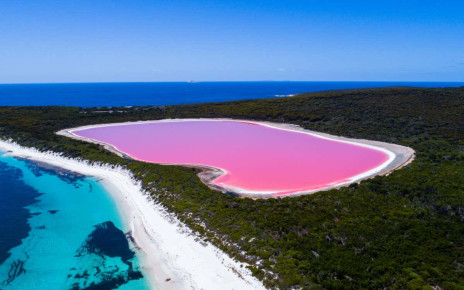[ad_1]

“One of the best renditions of dinosaurs on film in decades”: Baby Triceratops in Walking with Dinosaurs.
Alamy Stock Photo
I’m a palaeontologist at Queen Mary University of London specialising in the behaviour and ecology of dinosaurs, but I also write about them. My new book, The Future of Dinosaurs, looks at the current gaps in our knowledge and understanding of these amazing ancient animals. But for all that we still don’t know, dinosaurs remain an enduring subject for film-makers and have now been on screen for more than a century with varying degrees of accuracy and interest. I’ve tried to get in a real mix of genres and approaches here and to consider these films as products of their time, since many were excellent when first made.
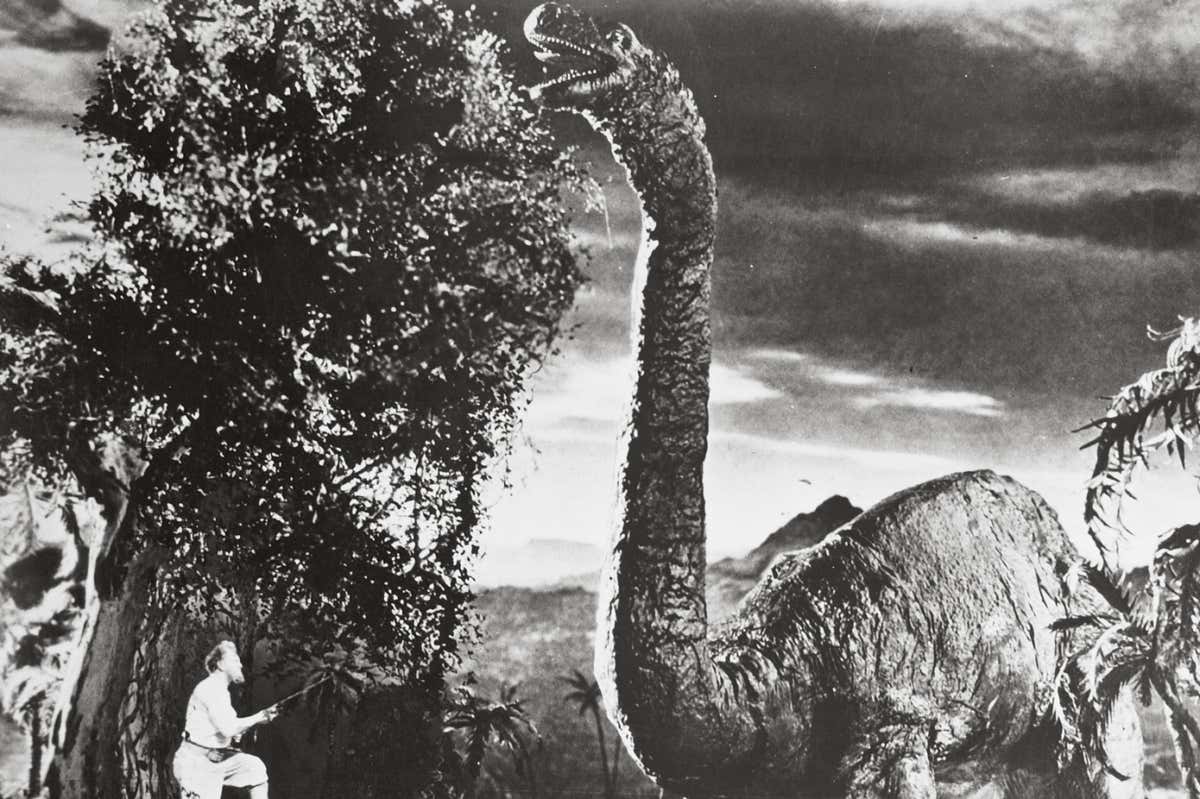
A still from The Lost World.
Alamy Stock Photo
The Lost World (1925). One of the first ever cinema outings for dinosaurs, this silent era adaptation of Arthur Conan Doyle’s classic novel has some remarkably good animation for its time. The dinosaurs are not only nicely made and animated, but show realistic and interesting behaviours not often seen in other movies – for example, a parent triceratops is shown looking after a youngster. These dinosaurs are shown as animals to be studied and enjoyed, rather than monsters that are just there to harass the protagonists.
King Kong (1933). A true classic, and while the eponymous giant ape may be the star, the dinosaurs play a prominent role. Inevitably, we see a very much herbivorous sauropod desperate to chow down on a sailor, setting the tone for many future dinosaurs in movies, but the stegosaurus with its period-correct four pairs of tail spikes and the wonderfully animated tyrannosaurus are both great. Hollywood legend has it that one of the background plates for this film was reused in Citizen Kane, so arguably the greatest film ever has some pterosaurs flying in it. Also, an honourable mention to the 2005 version of King Kong, which retained a 1930s-era aesthetic for the dinosaurs, but also really thought about how they might have evolved and survived post the end-Cretaceous extinction.
One Million Years BC (1966). It’s probably fair to say that accuracy wasn’t a priority here, with “cavemen” (from as recently as 10,000 years ago) mingled with a range of prehistoric animals (from 150 million to 65 million years ago), but the dinosaurs and other animals animated by stop-motion legend Ray Harryhausen are a delight. The young allosaurus in particular is an all tail-swishing, fast-running menace, and the triceratops would have graced any museum at the time as a model of what researchers thought dinosaurs looked like. The oversized, bat-like winged pterosaurs are rather less good, if still well animated.
The Valley of Gwangi (1969). An even better Harryhausen dinosaur movie, though a much less well known one. This features a “lost valley” of dinosaurs uncovered in Mexico by a circus owner, which leads to the fantastic spectacle of the titular carnivore fighting an elephant after the local cowboys have thrown lassos over a centrosaurus. Gwangi might be a made-up dinosaur, but it and the other prehistoric creatures are beautifully rendered and, as with The Lost World, they aren’t just there to provide menace.
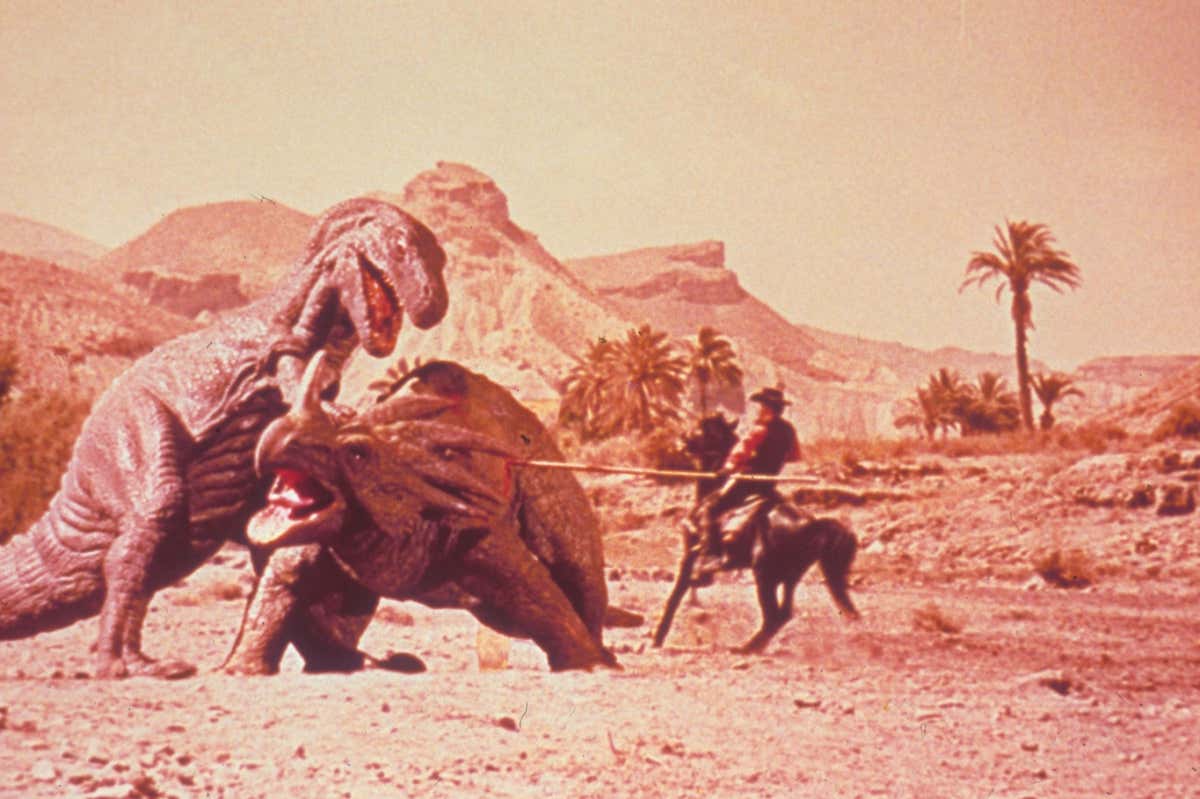
A scene from The Valley of Gwangi.
Alamy Stock Photo
Planet of Dinosaurs (1977). Another little-known entry, and one of the last stop-motion classics. All of the money in this schlocky B-movie about a spaceship crash-landing on a dinosaur-ridden planet went on the effects (at the expense of sets, props, the script and the actors), but it was well spent. The animals are wonderfully rendered and beautifully animated, and a fair number of lesser-known species get some good airtime – even if the main “villain” is inevitably a tyrannosaurus.
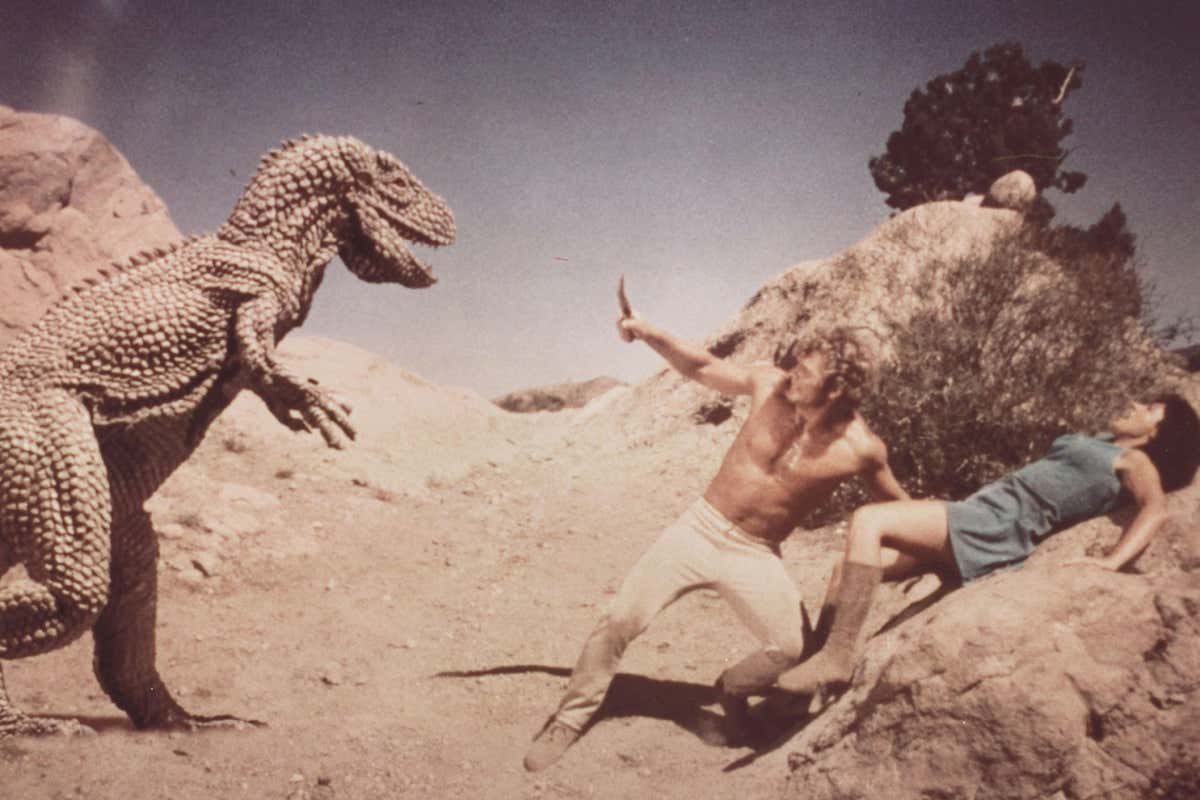
A scene from Planet of the Dinosaurs.
Alamy Stock Photo
Jurassic Park III (2001). This is probably my favourite of the series. The CGI used to create the dinosaurs and the quality of the animatronics were at their best. This, coupled with a decent story, tight running time and the least amount of children in any of the movies means it is a great entry. The fact it brought spinosaurus to the world’s attention is of questionable value, although it gets definite bonus points for the really nice pteranodon (even if they have teeth and aren’t dinosaurs).

Sam Neill in Jurassic Park III.
Alamy Stock Photo
Aztec Rex (2007). This is one of a huge raft of relatively recent made-for-TV movies that used the increasing accessibility of CGI and dinosaur popularity to churn something out. However, it is a rough diamond, and with a bit more of a budget, it could have been great. In 1521, a troop of lost conquistadores in Mexico discover that the local Aztecs have a late surviving tyrannosaurus running around in the jungle. It contains a far better digital model than turns up in even big-budget films and has a nice and creepy Jaws-like feel.
Dinotasia (2012). The odd history of this movie (compiled from a multi-part television series that veered from detailed documentary to classic cartoon-inspired parodies) means it is more than a bit hit and miss. But the hits are top class and the wordless storytelling, plus scenes directly inspired by genuine palaeontological discoveries and scientific papers, make this a worthwhile entry. Plus, it’s narrated by Werner Herzog!
Walking with Dinosaurs (2013). No, not the classic 90s TV series, but a whole movie of the same name. The dinosaurs might talk to one another, but enormous detail has gone into the models, and the creation of an entire ecosystem full of species that are rarely, if ever, shown on screen means this one of the best renditions of dinosaurs on film in decades. The work of consultant palaeontologists shines here as it so rarely does in many other big-screen dinosaurs.
Dinosaur Island (2014). Another little-known effort, this Australian fantasy movie is aimed squarely at children, but it has some of the best rendered dinosaurs shown for many a year. Some incredible-looking creatures make it to screen; this shows what can be done with a limited budget but a great eye for anatomy and modern research.
A dishonourable mention goes to 65 (2023), the most recent of the Hollywood efforts to fall horribly flat, thanks to a bunch of dinosaurs that are recognisable species but shown in weird and outdated ways, making them neither creative new monsters nor modern renditions of real animals. These come alongside some genuinely novel creations, which then begs the question: why set the story on Earth if you are going to have fictional creatures? In short: bad dinosaurs, bad film.
Topics:
[ad_2]
Source link

